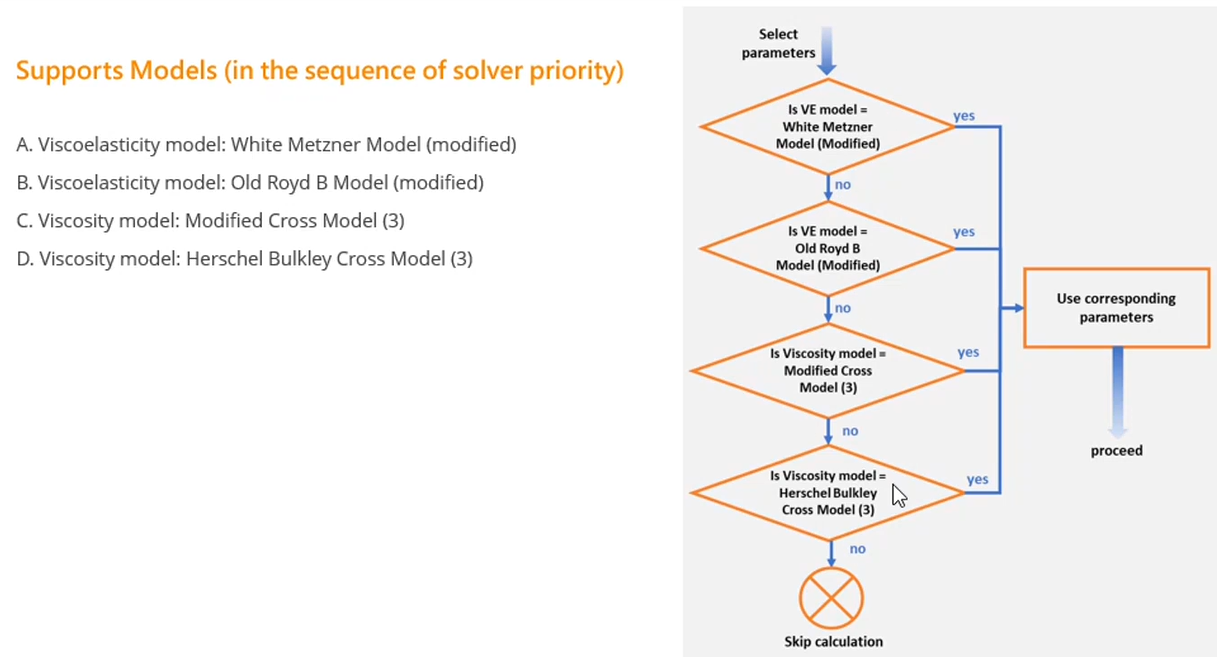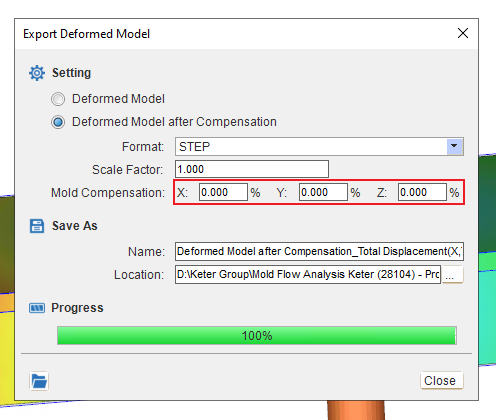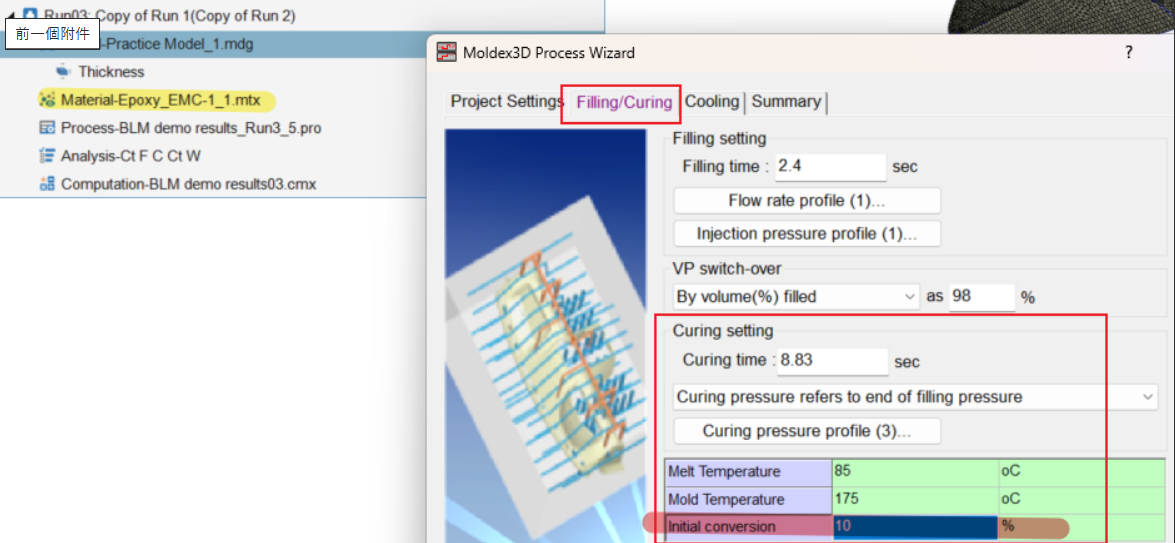Questions
6
Answers
6
-
Asked on 3 1 月, 2025 in FAQ.
- If the material has any one of the models listed below (in the sequence of solver priority used by the weld line strength solver in the filling result), there will be a weld line strength factor result in the filling result. Unfortunately, we don’t have a list, but for most of the materials recently added to the material bank, we used the Modified Cross Model (3) for viscosity. A few of them with GF will use the Herschel-Bulkley Cross Model (3). For the A and B models for viscoelasticity, our material team didn’t provide any fitting and testing. These two models can only be used if the customer has the parameters of the model. I would like to add that in 2025, we will include the Modified Cross Model (2) (used for most of the older materials in our material bank) to also support weld line strength factor calculation.
- The weld line strength option in the computation stress tab considers only the weld line angle and the remaining strength percentage you set. The strength reduction is based on the Young’s modulus reduction by the percentage you set.
- 449 views
- 1 answers
- 0 votes
-
Asked on 3 1 月, 2025 in FAQ.
The deformed model is the simulated warpage result of the part.
The mold compensation method is used to address shrinkage in injection molding parts. By predicting deformation values, the mold cavity can be designed slightly larger than the actual product to better meet dimensional criteria. Once you select the “deformed model after compensation,” you can modify the compensation parameters.
If you want to export the warpage in the opposite direction, you can adjust the “scale factor” to a negative value (e.g., -1). There are two different processes for viewing the model in Studio and exporting the model.
- 656 views
- 1 answers
- 0 votes
-
Asked on 6 11 月, 2024 in Moldex3D.
- 358 views
- 1 answers
- 0 votes
-
Asked on 6 11 月, 2024 in FAQ.The performance is not determine by 1 or 2CPU, it depends on the number of memory channels and whether the memory is DDR4 or DDR5.When you decide which is better you will first need to know how many memory channels the CPU have and what kind of Memory type (DDR4 or DDR5) they used.(each DDR4 support 2 cores, DDR5 support 4 core)Take this case as an example (theoretically):There would be two possibilities for each, the main point is the channel ratio1 CPU 32core 8 memory channels of DDR5 8*4 = 32 core 8 memory channels /32core = 0.2516memory channels of DDR4 16*2 = 32 core 16 memory channels /32core = 0.5 v higher ratio will be better2CPU 32core 4 memory channels of DDR5 4*4 = 16 core4 memory channels of DDR5 4*4 = 16 core 4+4 memory channels /32core = 0.258 memory channels of DDR4 8*2 = 16 core8 memory channels of DDR4 8*2 = 16 core 8+8 memory channels /32core = 0.5 v higher ratio will be better
 Back to your question if the ratio is same in both condition, 1CPU would be better because it don’t need to communicate between each other.
Back to your question if the ratio is same in both condition, 1CPU would be better because it don’t need to communicate between each other.- 379 views
- 1 answers
- 0 votes
-
Asked on 19 9 月, 2024 in Moldiverse.We have website for parameters fitting: https://mhc.moldex3d.cloud/#/data-fittingHere are the instructions:
-
-
Download the template and fill in your material information => Upload the completed template
-
-
-
Then click the ‘Data Fitting’ button to obtain the result
-
- 500 views
- 1 answers
- 2 votes
-
-
Asked on 19 9 月, 2024 in Moldex3D.This function in cooling solver is used when the temperature is less than user-set tolerance, which means the process is at steady state, temperature calculation will be ended.Maximum variation of mold temperature
-
Compare time at initial state of each cycle
-
Suggest using to confirm mold can reach steady state
Cavity surface average temperature-
Suggest using in normal situation
Maximum variation of part surface temperature-
Compare time at initial state of each cycle
-
Suggest using to capture part minor changes
The three tolerance criteria had been set up for convergence conditions in the beginning of the cooling solver and through series of simulation experience, the default ” Max variation of mold temperature” and the parameters is the most recommended. It have a proper calculation time, acceptable convergence and a reliable result.- 387 views
- 1 answers
- 1 votes
-













